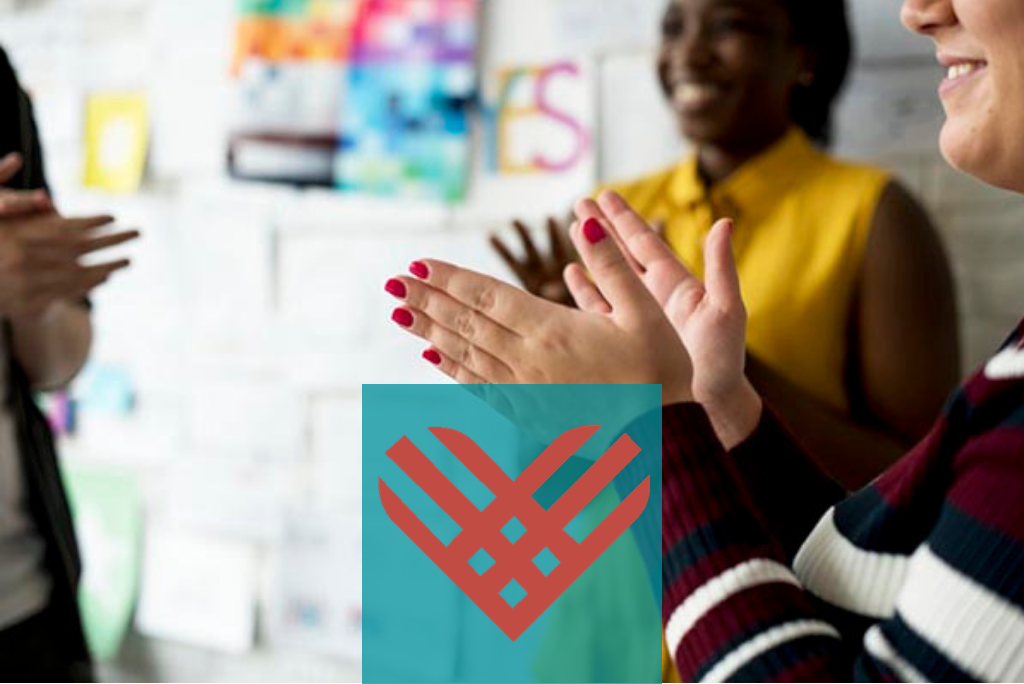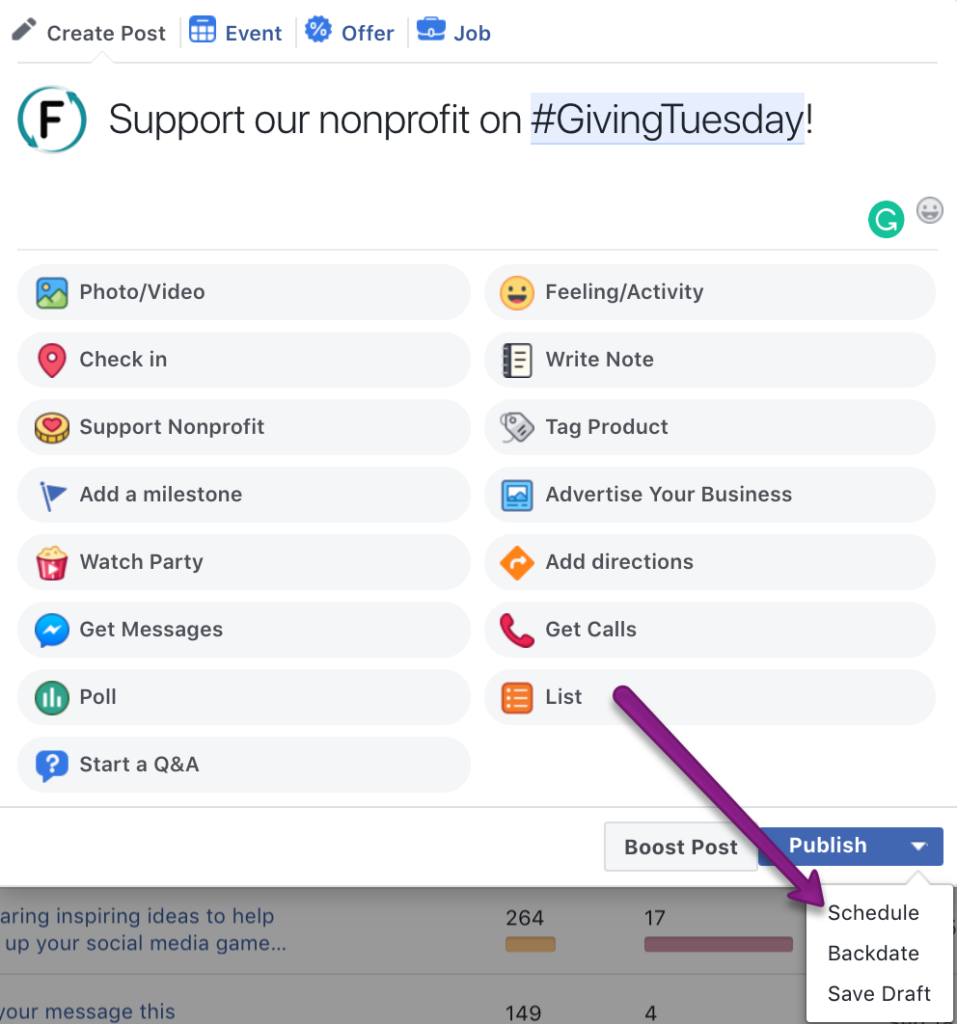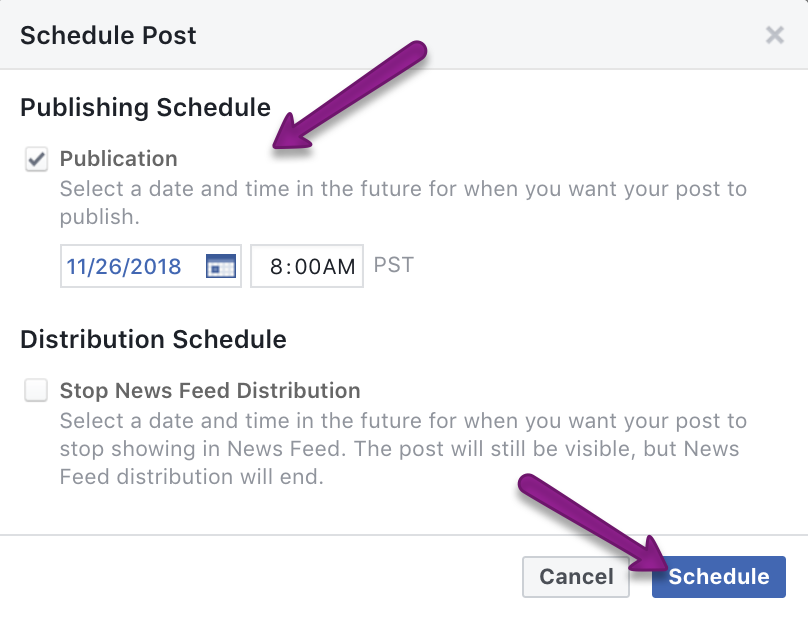A #GivingTuesday campaign in just one week?
This might be the first time your nonprofit has thought about participating in #GivingTuesday. Or your small and mighty team has been focused on other priorities. For any of a number of legitimate reasons, you’ve waited until November to join the global giving movement. And now your nonprofit is developing a case of FOMO (fear of missing out). Because last year nonprofits raised $2.5 billion online on #GivingTuesday!
To get the most out of the big day, you should start planning at least 2 months in advance. But we know that’s not always possible! If you’re still determined to fundraise on November 30th, you can set yourself up for the best results starting today.
We’re sharing a lightweight strategy to guide your participation—because a single social media post and donate button won’t get you the results you’re looking for. Use the following one-week guide to improve the results of your #GivingTuesday campaign.
And if you’ve already been planning, you can use the checklist to make sure you’ve got all your campaign elements in place!
The ingredients for a #GivingTuesday campaign
With an active, segmented email list and social media profile(s) in place, you can use the week before #GivingTuesday to create and share:
☐ An achievable campaign goal
☐ A compelling story and call-to-action
☐ 1 campaign page
☐ 1 (optional) website update
☐ 7-10 social media posts:
- (1) Save-the-Date post
- (3-4) Awareness posts
- (1) Reminder post
- (1) Donate Today post
- (1-2) Campaign Update/Donate Now posts
- (1) Thank You post
☐ 4 emails:
- (1) Save-the-Date email
- (1) Reminder email
- (1) Donate Today email
- (1) Campaign Update email
☐ A timely, personalized thank-you for every donation, and
☐ 1 (optional) video message
Once your campaign is over, you’ll be ready to focus on:
☐ Capturing your donor data and measuring results, and
☐ Ongoing communication to cultivate support
The Timeline: Put your strategy into place
☐ Set a clear and achievable fundraising goal
Choose an amount that you believe you can realistically raise in 24 hours, based on your past fundraisers and existing relationships. This is important because participating in a fundraiser that reaches its goal will make your donors feel good and build momentum for end-of-year giving and beyond.
Tip: If possible, secure 1/3 of your fundraising goal ahead of time by reaching out directly to your closest supporters.
☐ Create your messaging
Connect your fundraising goal to an outcome. For example: raising $1,000 will fund a scholarship for a first-generation college student in 2022. Then, choose (and tell) one story that illustrates your donors’ impact and encourages donations.
☐ Build a campaign page
For #GivingTuesday, you need to build a new campaign page or update your existing donate page. Make sure to:
- Use official #GivingTuesday logos.
- Check out these design principles for a great-looking campaign page, like using your nonprofit’s logo in a prominent place as well as your branded colors.
- Include the dollar amount of your fundraising goal and a clear call-to-action.
- Incorporate your #GivingTuesday messaging and story.
☐ Segment your mailing list
Gather the email addresses for people who have engaged with your nonprofit in the last year, including volunteers and donors. These are the folks who will receive your campaign emails, starting tomorrow.
☐ Update your website for #Givingtuesday (Optional)
Add a banner to your website that lets your visitors know you’ll be participating in #GivingTuesday this year.
☐ Write your 4 #GivingTuesday emails
Email is the most direct and effective way to engage your existing supporters. These messages will make up the core of your #GivingTuesday campaign and digital marketing strategy. You’ll want to send:
- A save-the-date message that primes people to give.
- A reminder email to help your giving day message stand out in your supporters’ inboxes.
- A call-to-action email that asks your supporters to donate to your #GivingTuesday campaign.
- A campaign update email as a final reminder to supporters who haven’t given yet, and a thank-you to those who have. This email tells supporters how much you’ve raised—and how much more you need to reach your goal.
Make sure your 3rd and 4th emails include a link to your campaign page where supporters can donate!
Tip: Leverage donor psychology with the words YOU, BECAUSE, and THANKS in these appeals to encourage more donations. Here’s an explanation of why these words are so effective.
✓ Send Your Save-the-Date Email
☐ Create your social media posts
You’ll want to post today and every day leading up to #GivingTuesday! Don’t worry about flooding your followers with content; social media platforms all use advanced algorithms that ensure people only see content that they like and engage with. In fact, chances are that if you’re not paying to promote your content, only a fraction of your supporters will see your posts in their feeds.
Create the following daily content to share on Facebook:
- Create a save-the-date post and share it today! Tag your biggest supporters and encourage them to share your post as well.
- Additionally, you’ll want to create 3-4 awareness posts to send throughout the week in the buildup to your campaign. Include elements of your campaign message and story to create continuity. A gratitude post on Thanksgiving is a simple, timely way to connect with your supporters.
- A reminder post on Monday will keep your nonprofit top-of-mind, and reinforce the email you send to supporters.
- A donate today post should go out on #GivingTuesday and include a clear call-to-action.
- 1-2 campaign updates should also go out throughout the day on #GivingTuesday and encourage supporters to help you reach your goal.
- Bring it all home with a genuine thank-you post when your campaign is over.
In your social media posts, be sure to:
- Include relevant hashtags, like #GivingTuesday.
- Incorporate your campaign goals and messaging.
- Use engaging images, like close-ups of faces.
You can also find inspiration for your content with these 5 ideas for social media on #GivingTuesday.
☐ Schedule (most of) your social media posts
Scheduling your social media posts means you don’t have to worry about posting each day. All of your posts (except for your campaign updates and thank-you message) can be scheduled ahead of time. This will free you up to enjoy the holiday and weekend! Just make sure someone is actively monitoring your posts and profiles.
You can schedule posts directly within social media platforms like Facebook:
You can also use a social media management tool like Buffer to schedule your posts for free!
It’s a national Holiday! Give thanks and recharge.
✓ Your Scheduled gratitude post goes out on social media
☐ Plan to give (timely) thanks again.
Write a thank-you letter that will go out specifically to your #GivingTuesday donors, and:
- Update the automatic thank-you message that donors will receive, if any.
- Be prepared to send your thank-you via email when someone contributes.
- Check out our post on saying thank you for more ideas.
☐ (Optional) Record a video message
Have your Executive Director or an enthusiastic volunteer record a short message of support encouraging people to donate on #GivingTuesday. It doesn’t have to be a big production. Keep it simple by recording with your phone in bright, natural light. When you’re done recording, add the video to the email and social media posts that will go out on #GivingTuesday.
✓ Your Scheduled #GivingTuesday post goes out on social media
✓ Two more #GivingTuesday posts go out on social media
☐ Keep an eye on your scheduled content & Engage with your supporters on social media
✓ Send the reminder email to your supporters
✓ Scheduled Reminder post promotes your campaign on social media
✓ Send your call-to-action email
☐/✓ Write and send Campaign updates (Email & Social Media)
✓ say thank you
☐ Measure success and keep in touch
Especially if this is your first time running a #GivingTuesday campaign, make sure to capture your donors’ data and use it to set benchmarks. Next year, you can plan ahead and raise even more!
But measuring your success on #GivingTuesday isn’t just about how much money you raise. Every person who engages with your campaign is starting (or continuing) to build a relationship with your organization! Add your new supporters to your mailing list and send them regular updates.
By prioritizing regular, ongoing communications with your donors, you’ll make them receptive to your next fundraising appeal. After #GivingTuesday, you’ll want to start thinking about asking these donors to give again:
Are you ready for #GivingTuesday? Share YOUR tips and advice for a successful campaign!











0 Comments